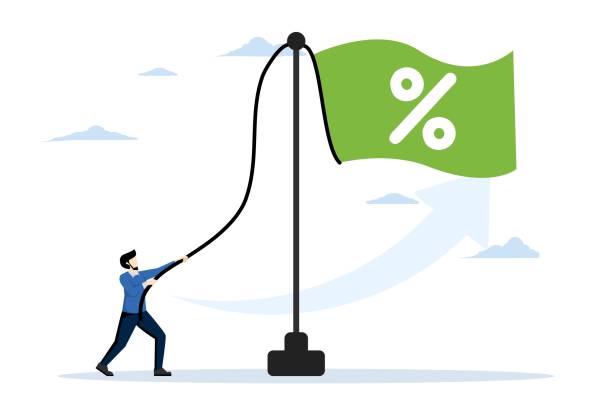U.S. Housing Market Outlook Q2 2025 – Prices
April 22, 2025

Invest in suburban areas where price growth remains stable yet promising. As the second quarter of 2025 unfolds, housing prices in suburban regions offer a viable alternative to the expensive urban properties. Suburban areas continue to attract families and remote workers, fueled by the shift towards more flexible work arrangements. The allure of more space, combined with accessible pricing, positions these areas as a smart choice for potential homeowners looking to maximize value without sacrificing convenience.
Data from recent surveys reveal that home prices in the suburbs are set to rise by an estimated 4% this quarter. This increase appears stable compared to the modest 2% projected growth rate in urban areas. Prospective buyers should capitalize on these trends, as the demand for suburban housing is unlikely to wane in the near future. Population shifts favor these locations, reinforcing their long-term value and livability.
Consider diversifying your real estate portfolio by including multifamily homes. In 2025, multifamily properties are emerging as attractive investments due to their potential for higher rental yields. As remote work becomes more entrenched, people are seeking larger living spaces to accommodate both work and leisure. Multifamily homes cater to this demand, offering investors an opportunity to gain significant returns in a market that prioritizes space and versatility over traditional single-family units.
Housing price predictions for Q2 2025 indicate a steady but significant upward trend. Market analysts suggest a continued rise in construction material costs, pushing home prices higher in new developments. Given these insights, now is the time to explore diverse markets and dwellings that promise both growth and affordability.
S. Housing Market Outlook Q2 2025

Expect home prices in the U.S. to moderately increase during Q2 2025, driven primarily by strong demand in urban areas and a limited supply of new homes. Focus on cities with rapid job growth, such as Austin and Raleigh, where competition among buyers will likely push prices upward. Invest in properties with sustainable features and energy-efficient systems, as these are increasingly attractive to modern buyers and can command premium prices.
Interest rates may stabilize after recent fluctuations, encouraging potential buyers who were previously hesitant. This stabilization could lead to increased activity in the housing market. Prospective buyers should act swiftly to secure favorable financing terms while they remain accessible.
Pay attention to regional economic trends since areas with burgeoning tech industries and robust infrastructure development, such as the San Francisco Bay Area, could witness more aggressive price gains. Sellers in these hotspots should consider listing their properties sooner to capitalize on the upward pricing momentum.
Monitor legislative changes that might affect property taxes and zoning laws, as these could influence future market conditions and pricing strategies. Engage with real estate professionals who have a solid grasp of local market dynamics to guide investments during this period of gradual growth and opportunity.
Price Trends and Forecasts

Expect U.S. home prices to rise by 3-5% by mid-2025, driven by strong demand and limited inventory. A significant factor is the stable economic growth, fueling consumer confidence and purchasing power. Prospective buyers will benefit from locking in mortgage rates, expected to remain at moderate levels, preserving affordability despite price increases.
Regional variations will play a crucial role, with urban areas seeing faster appreciation due to ongoing urbanization trends and limited development space. In contrast, some suburban markets may witness slower growth, impacted by increased construction and lower demand. This indicates opportunities for investors to diversify portfolios by considering booming urban sectors.
Technological advancements in real estate services enhance market efficiency, facilitating quicker transactions. Buyers and sellers can leverage these tools for more informed decisions, potentially accelerating market dynamics. Staying informed about local employment trends will also offer insights, as regions with expanding job markets are likely to experience heightened housing demand.
The entry-level housing sector will remain competitive, as millennials and Gen Z continue to enter the market. This trend underscores the importance of affordability in shaping market dynamics. Sellers can capitalize on this demand by positioning properties strategically to appeal to first-time homebuyers, emphasizing features that cater to younger buyers’ preferences.
Overall, stakeholders should remain adaptive, focusing on local market conditions and emerging demographic shifts to make strategic decisions. Leveraging available data and predictive analytics can enhance the understanding of future trends, guiding informed investment strategies and purchasing decisions in this dynamic environment.
Regional Price Variations: A State-by-State Analysis
Prioritize understanding how state-specific dynamics impact housing prices to make informed decisions. California continues to boast the highest property values, with median home prices expected to hit $800,000 by Q2 2025. This increase results from sustained demand and limited supply. In contrast, Texas presents a more affordable alternative, with expected median prices around $360,000, influenced by a thriving job market and lower living costs.
Potential buyers in Florida should anticipate prices steadying at approximately $420,000, thanks to the state’s consistent influx of retirees and tourists. Meanwhile, New York housing markets, particularly outside the urban centers, predict a rise to around $625,000, driven by suburban migration trends.
| State | Projected Median Price Q2 2025 | Factors Influencing Prices |
|---|---|---|
| California | $800,000 | High demand, limited supply |
| Texas | $360,000 | Job market growth, affordable living |
| Florida | $420,000 | Retiree and tourist influx |
| New York | $625,000 | Suburban migration |
Midwestern states like Ohio are expected to maintain a moderate price level, with projections at $220,000. This steadiness reflects balanced demand and economic stability. Arizona homes might see a slight uptick to $350,000, spurred by migration from other states seeking warmer climates.
Recognize these variations to tailor investment strategies according to regional trends and market conditions. Focus your search aligned with financial goals and lifestyle preferences.
Impact of Economic Indicators on Home Prices
Understanding key economic indicators helps predict housing market trends effectively. The Federal Reserve’s interest rates often lead the list, as changes directly influence mortgage rates. A rate hike typically increases the cost of borrowing, reducing affordability for many buyers, which can slow price growth.
Unemployment rates also play a pivotal role. Higher employment levels boost consumer confidence and spending power, potentially driving up home demand and pushing prices higher. For instance, a decline in unemployment from 5% to 4.5% can lead to increased buyer activity.
Inflation trends are equally significant. When inflation rises, building costs and home prices tend to increase. Monitoring inflation rates allows potential buyers and investors to anticipate changes in construction and housing costs. The Consumer Price Index (CPI) offers insight into inflationary pressures, with a persistent 3% increase often signaling consistent price hikes.
Gross Domestic Product (GDP) growth indicates the economy’s health, impacting housing demand. Strong GDP growth, such as exceeding 2% annually, usually correlates with increased real estate activity. A thriving economy supports higher wages and consumer confidence, encouraging home buying.
Lastly, housing inventory levels influence price dynamics. A balanced market with adequate supply maintains stable pricing. For example, if the inventory drops below a four-month supply, it often creates a seller’s market, leading to rising home values.
Keeping these indicators in check assists buyers, sellers, and investors to better anticipate market movements, make informed decisions, and strategize accordingly to optimize their positions in the housing market.
Role of Foreign Investment in U.S. Real Estate Prices
Focus on monitoring countries with aggressive investment trends in U.S. real estate, such as China, Canada, and the United Kingdom. The demand from these nations often leads to fluctuations in property values, especially in metropolitan areas. Assess the impact of policy changes like taxation on foreign buyers, as they directly affect the investment volumes. Economic stability and currency strengths of investor countries play a significant role; for instance, a stronger dollar could deter foreign buyers, reducing their influence on price hikes.
Investors should consider market segments favored by foreign investors. Luxury real estate remains a priority, and tracking these preferences helps anticipate shifts in market dynamics. Additionally, regulatory environments enabling or restricting foreign investments, such as Australia’s stringent regulations versus Portugal’s open-door policies, provide insights into potential future trends in U.S. housing prices.
Practical advice includes diversifying portfolios to mitigate the volatility tied to foreign investment patterns. Engaging with local real estate agents who understand these international trends can offer valuable direction. Stay updated on geopolitical developments, as they can unpredictably sway investment flows, directly impacting property prices. Monitoring cross-border digital platforms reveals emerging preferences and scrutiny levels in various real estate sectors.
Comparison of Urban vs. Suburban Price Trends
Focus on suburban areas for investment if stability matters to you. Recent data highlights a steadier price trend in suburban regions compared to urban areas. Prices in cities like New York and San Francisco experience significant fluctuations, reflecting broader market volatility.
- Urban Price Trends: Over the past year, urban housing markets report an average price increase of 9%. Major cities such as Los Angeles see hikes up to 12% in certain quarters, driven by demand for limited spaces.
- Suburban Price Trends: Suburban markets display a consistent growth pattern with an average increase of 5% year over year. Areas near major metropolitan regions like Westchester County offer 8% gains, appealing to buyers seeking space and tranquility without urban chaos.
- Investment Potential: Suburban areas offer long-term growth potential due to ongoing demand from remote workers seeking permanent moves away from dense urban centers.
- Buyer Preferences: Preferences shift towards homes with larger spaces and amenities. This fuels the suburban market, where properties tend to include these features at competitive prices.
Shifting demographics and lifestyle priorities continue to shape these trends. Opt for urban investments if short-term returns are your goal. Prefer suburban regions for a more stable, long-term growth outlook while availing lower entry prices compared to prime city locations.
Long-term Predictions: Where Will Prices Head by 2030?
Expect a moderate rise in U.S. housing prices by 2030, driven by demographic shifts and economic factors. Urban areas will continue to see the most significant growth due to increasing population density and limited space for expansion. Areas like San Francisco, New York, and Los Angeles may witness a price increase of up to 30% over the next several years due to high demand and limited supply.
In contrast, smaller, less populated regions might experience a slower growth rate. Affordable housing initiatives and remote working trends could spur moderate price increases in these areas, estimated between 10% to 15% by the end of the decade.
Interest rates are predicted to remain a pivotal influence. As rates stabilize, more buyers may enter the market, increasing demand further and potentially pushing prices upward. Aldo, the continual post-pandemic trend of remote work will likely sustain interest in suburban and rural areas, offering a more balanced market across the U.S.
| Region | Expected Price Increase by 2030 |
|---|---|
| Major Urban Centers | 25% – 30% |
| Suburbs | 15% – 20% |
| Rural Areas | 10% – 15% |
Sustainability trends and green building practices will also play a role. As consumers increasingly prioritize eco-friendly homes, properties with energy-saving features could fetch a premium, further influencing the pricing landscape.
Staying informed about economic policies, infrastructure developments, and technological advancements will be key to navigating these shifts. By understanding these factors, buyers and investors can better position themselves for the market changes expected by 2030.
Supply, Demand, and Interest Rates

Assessing the U.S. housing market for Q2 2025 demands attention to three critical components: supply, demand, and interest rates. Each plays a pivotal role in shaping market dynamics, influencing buyer and seller strategies alike.
- Supply Constraints: Housing inventory remains limited in many regions. To navigate this challenge, prospective homebuyers should explore new or expanding neighborhoods, which may offer more options and better pricing. Sellers, on the other hand, can leverage the scarcity to negotiate favorable terms.
- Demand Dynamics: Demand continues to vary across demographics, with millennials entering the market in larger numbers. Real estate agents should prioritize marketing strategies that appeal to this tech-savvy group, focusing on digital platforms and virtual tours to showcase properties. Buyers from this demographic should remain pre-approved and ready to act quickly in competitive markets.
- Interest Rates Influence: As interest rates potentially decrease or stabilize, more buyers might feel encouraged to secure mortgages. Homeowners contemplating refinancing or purchasing should monitor rate changes closely, as this could enhance affordability and expand housing budgets. Engaging with financial advisors to understand the impact of rate fluctuations can provide a financial edge.
By strategically addressing these three factors, stakeholders can better position themselves for success in the Q2 2025 housing environment.
Current Supply Challenges in Major Metros
Major metros need to intensify their efforts in addressing the shortage of available housing units. With demand consistently outstripping supply, cities like New York, Los Angeles, and San Francisco could see prices rise significantly absent any intervention. Construct new housing projects focused on affordability, especially in areas with stagnant or declining stock.
Streamline zoning and building permit processes to accelerate new developments. Existing bureaucratic hurdles often delay projects considerably, exacerbating supply issues. Engage with local communities to enhance project transparency and reduce resistance.
Encourage public-private partnerships to fund infrastructure improvements and incentivize development in underutilized spaces. Leverage tax incentives to motivate developers to invest in sustainable and diverse housing options that reflect community needs.
Strengthening public transportation networks can effectively alleviate congestion in overpopulated metro centers and make less dense areas more attractive for residential development. This redistribution can help balance the supply-demand disparity.
Datalog systems to monitor changes in population flows, economic indicators, and housing demand are crucial in making informed, strategic decisions. Collaborating across government sectors and with private stakeholders ensures comprehensive strategies yield optimal outcomes, paving the way for a more balanced housing market.
How Interest Rate Changes Affect Buyer Affordability
Consider locking in your mortgage rate when interest rates are stable or decreasing. Securing a lower rate means you’ll save on monthly payments and overall interest, making homes more accessible financially. If rates are rising, assess whether to buy sooner rather than later, as increasing rates can significantly impact your purchasing power.
- For example, a 1% increase in interest rates can decrease your buying power by approximately 10%, requiring buyers to reassess their budgets or home expectations.
- Explore different mortgage options: fixed-rate mortgages offer stability, while adjustable-rate mortgages can have lower initial rates but may adjust upward over time.
- Consider improving your credit score to qualify for better rates. A higher score can help you secure a more favorable interest rate, substantially affecting affordability.
- Think about larger down payments to lower interest costs and boost affordability. A 20% down payment can eliminate private mortgage insurance and reduce monthly costs.
By understanding how interest rates affect your budget and exploring various strategies to mitigate their impact, you can enhance your ability to afford a home that meets your needs and financial parameters.
Q&A:
Why are housing prices expected to rise in Q2 2025?
Housing prices in Q2 2025 are anticipated to increase due to a combination of factors. These include persistent low-interest rates, limited housing inventory, and a strong demand fueled by population growth and economic recovery. Additionally, construction costs remain high, impacting new home prices.
Is there a likelihood of a housing market crash in the near future?
A significant market crash appears unlikely in the near term. While prices are expected to rise, underlying market fundamentals such as stable mortgage lending practices and continued demand support the market’s resilience. However, potential risks, such as economic downturns or unforeseen events, could influence market dynamics.
How do current mortgage trends influence housing affordability?
Current mortgage trends, particularly the persistence of low-interest rates, support housing affordability by making monthly payments more manageable. However, as prices continue to climb, overall affordability becomes a challenge, especially for first-time buyers trying to enter the market.
What regional differences are expected in the U.S. housing market by Q2 2025?
By Q2 2025, regional disparities are likely to persist, with urban areas and tech hubs continuing to see significant price increases driven by demand and job opportunities. In contrast, some rural areas may experience slower growth or stabilization as migration trends and job availability vary.
How does international investment impact the U.S. housing market outlook for 2025?
International investment plays a role in shaping the U.S. housing market outlook. High levels of foreign investment, especially in luxury and metropolitan properties, sustain demand and contribute to price increases. However, geopolitical factors and international economic policies could shift investment trends, impacting market conditions.